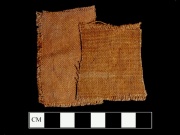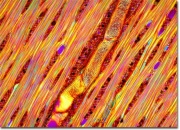Difference between revisions of "Sassafras"
(username removed) |
(username removed) |
||
| Line 28: | Line 28: | ||
== Authority == | == Authority == | ||
| − | * | + | * Rosalie Rosso King, ''Textile Identification, Conservation, and Preservation'', Noyes Publications, Park Ridge, NJ, 1985 |
| − | * | + | * F. H. Titmuss, ''Commercial Timbers of the World'', The Technical Press Ltd., London, 1965 |
* ''The Merck Index'', Martha Windholz (ed.), Merck Research Labs, Rahway NJ, 10th edition, 1983 Comment: entry 6941 | * ''The Merck Index'', Martha Windholz (ed.), Merck Research Labs, Rahway NJ, 10th edition, 1983 Comment: entry 6941 | ||
| − | * | + | * Website address 1 Comment: Virginia Tech Dendrology website at www.fw.vt.edu/dendro/dendrology/main.htm (accessed Oct. 8, 2005) |
* Wikipedia, the free encyclopedia, at http://www.wikipedia.com Comment: http://en.wikipedia.org/wiki/Sassafras (Accessed Oct. 8, 2005) | * Wikipedia, the free encyclopedia, at http://www.wikipedia.com Comment: http://en.wikipedia.org/wiki/Sassafras (Accessed Oct. 8, 2005) | ||
| − | * | + | * G.S.Brady, ''Materials Handbook'', McGraw-Hill Book Co., New York, 1971 Comment: p. 751 |
[[Category:Materials database]] | [[Category:Materials database]] | ||
Revision as of 06:45, 24 July 2013
Description
Any of several shrubs or small laurel trees from the Sassafras genus (S. variifolium, S. albidum, S. lauraceae) that are native to the northern temperate region. Sassafras shrubs are commercially known for their fragrant oil that is used in perfumes, root beer, and tea. The soft, lightweight wood has a moderately coarse, but straight grain with an uneven texture. The lumber has been used for fence posts, cabinetry and furniture but it cracks and splits easily. The wood is often chipped then extracted with water to produce a rose-brown to gray color textile dye with good color fastness.
Synonyms and Related Terms
saxifrax; ague tree (Sassafras albidum); cinnamon wood; saloop; golden deal (yellow sassafras); Sassafrasbaum (Deut.); sassafra (Fr.)
Other Properties
Medium tree growing to 30m with straight trunk. Bark = Deeply furrowed brown color; when cut shows cinnamon color interior with strong spicy smell. Leaves = tri-lobal (25-30cm) Other characteristics = yellow flowers in spring followed by blue berries
| Density | 25-35 ppcf |
|---|
Hazards and Safety
Wood is subject to insect and fungal attack. One component of the oil (safrole) is toxic and is considered a carcinogen.
Authority
- Rosalie Rosso King, Textile Identification, Conservation, and Preservation, Noyes Publications, Park Ridge, NJ, 1985
- F. H. Titmuss, Commercial Timbers of the World, The Technical Press Ltd., London, 1965
- The Merck Index, Martha Windholz (ed.), Merck Research Labs, Rahway NJ, 10th edition, 1983 Comment: entry 6941
- Website address 1 Comment: Virginia Tech Dendrology website at www.fw.vt.edu/dendro/dendrology/main.htm (accessed Oct. 8, 2005)
- Wikipedia, the free encyclopedia, at http://www.wikipedia.com Comment: http://en.wikipedia.org/wiki/Sassafras (Accessed Oct. 8, 2005)
- G.S.Brady, Materials Handbook, McGraw-Hill Book Co., New York, 1971 Comment: p. 751


